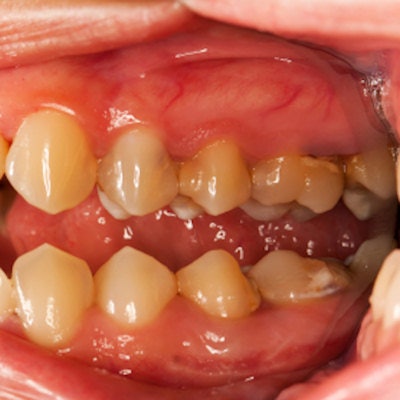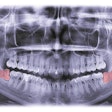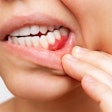
What is the best treatment for your patients with severe chronic periodontitis: subgingival debridement alone or debridement with one or two short courses (three or seven days) of antibiotics?
European researchers tested these three courses of treatment and reported that all reduced the number of sites in study participants' mouths with a pocket depth of 6 mm or larger, but the patients who took antibiotics had a lower risk of disease progression at one year. The study was published in PLOS One (June 29, 2017).
"At 12 months, all treatment groups showed statistically significant reductions in the number of sites with [pocket depth] ≥ 6 mm compared to baseline," the authors wrote. "No statistically significant differences could be detectable between the three treatment groups, even though the reductions were higher in the two antibiotic groups compared to the control group."
The study was led by Raluca Cosgarea, Dr med dent, of the Clinic of Periodontology at Philipps University in Marburg, Germany.
Shorter course of antibiotics
If left untreated, chronic periodontitis may lead to tooth loss and other health consequences. The goal of periodontal treatment is to remove bacterial deposits from the root surfaces through debridement, such as with scaling and root planing, and sometimes the use of adjunctive antibacterial agents, such as antibiotics.
Many studies vouch for the success of this combination therapy in terms of bacterial suppression, pocket depth reduction, and overall clinical outcomes, according to the current study authors. They also noted that an extended course of antibiotics is not optimal, so finding the optimal duration is crucial.
Their study sought to measure the clinical outcomes obtained at one year following nonsurgical periodontal therapy (done within two consecutive days) in conjunction with systemic administration of amoxicillin (AMX) and metronidazole (MET) for three or seven days in patients with severe chronic periodontitis.
The study included 102 patients with severe chronic periodontitis who were randomly assigned to one of three groups:
- Group A: Subgingival debridement within two consecutive days and placebo for seven days
- Group B: Subgingival debridement, amoxicillin, and metronidazole (both 500 mg three times daily) for three days
- Group C: Subgingival debridement plus amoxicillin and metronidazole (both 500 mg three times daily) for seven days
At baseline and then at three, six, and 12 months after treatment, researchers measured probing pocket depth, clinical attachment levels, furcation involvement, bleeding on probing, and a full-mouth plaque score. The reduction in the number of sites with probing pocket depth of 6 mm or greater was defined as the main outcome variable.
About three-quarters (75) of the patients completed the study. At one year, all three treatment groups showed statistically significant improvements (p < 0.001) in mean pocket depth, clinical attachment levels, and bleeding on probing. Also, there were fewer sites with pocket depth of 6 mm or greater compared with the baseline number.
| Effectiveness of adding antibiotics to subgingivial debridement | |||
| No antibiotics | AMX + MET for 3 days | AMX + MET for 7 days | |
| Percent of patients at low risk of disease progression at 12 months | 21.4% | 72.0% | 48.1% |
The authors also reported that mean residual pocket depth was lower and clinical attachment levels were greater in the two antibiotic groups, compared with the placebo group, and the differences for both groups were statistically significant. While pocket depth reductions (p = 0.012) and clinical attachment level gains (p = 0.017) were higher on a statistically significant basis in Group C compared with Group A, only the three-day Group B showed statistically significantly fewer sites with pocket depth of 6 mm or larger at one year (p = 0.003).
The reduction in the number of sites with pocket depth of 6 mm or less showed no statistically significant differences among the three treatment groups, according to the authors.
However, significantly more patients in both antibiotic groups compared with the placebo group reached a low risk for disease progression at 12 months (four or fewer sites with pocket depth of 5 mm or less).
"At 12 months, both adjunctive antibiotic protocols resulted in statistically significantly greater clinical improvements compared to placebo," the authors wrote.
Better outcomes
The authors mentioned the high attrition rate of patients as a limitation to their study. They attributed this dropout rate to three causes:
- Patients omitted their follow-up appointments.
- Patients took antibiotics in the follow-up period for other medical reasons.
- Patients were further surgically treated (usually with dental implants) by their referring dentists.
They also noted that their findings should be carefully interpreted and that further clinical study is needed with a larger number of participants.
However, both the three- or seven-day course of antibiotics led to better outcomes, they concluded.
"In patients with severe chronic periodontitis, nonsurgical periodontal therapy in conjunction with either three or seven days systemic administration of amoxicillin and metronidazole yields statistically significantly greater clinical improvements compared to nonsurgical therapy alone," they wrote.



















